Are massage guns scientifically proven, or an ineffective gimmick?
Massagers with vibrating pads that sit on the surface and send vibrations deep into your muscles have been used by professionals for... Read Article
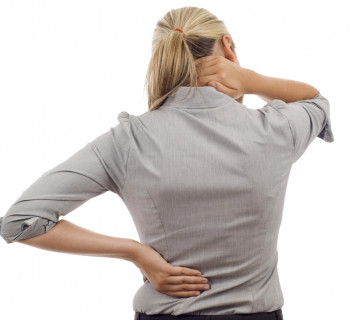
Massage and trigger point therapy are widely used to treat back pain. In this article we’ll discuss how these may help with your problem, including the various muscles and trigger points likely to cause you back pain, and the best therapies. These therapies can be expensive, so where possible we will give you safe effective self treatment options.
How massage and trigger point therapy can help back pain
Basic massage and trigger point therapy
Specific techniques for low back muscles
Professionals
References
In this section:
Massage has given good relief for back pain in clinical trials (1–3).
As discussed in our article Is massage better than anti-inflammatory drugs (NSAIDS) , in clinical trials massage gives far better results than the commonly prescribed anti-inflammatory drugs, (NSAIDS) while these drugs kill thousands of people each year. The only possible argument for taking the drugs would be that they are cheap and convenient. However, in the one trial (4) a simple home massage was found to be way superior to the pain killing medications (NSAIDS).
As discussed in our article on the cause of back pain, most cases of back pain involve changes to the muscles including:
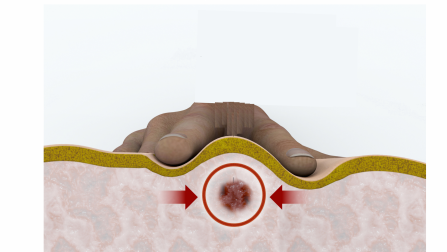
(Myofascial) trigger points, or trigger points for short, are those tender lumps in your muscles that therapists find. They are the prime focus of massage and trigger point therapies for back pain because they:
For more information on trigger points please see our article Your Complete Guide To (Myofascial) Trigger Points .
Musculoskeletal pain syndromes such as back pain are usually complex, needing other care as well massage and trigger point therapy. For more information please see our article on the cause of back pain.
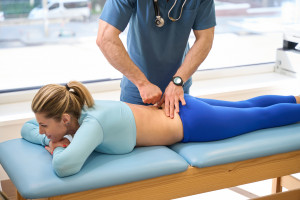
As the clinical trials have found massages and trigger point therapy by professional therapists are very useful for treating back conditions. Most therapists use a combination of what could be simply described as pressure, rubbing and squeezing. The treatment you receive can vary considerably depending on the treatment goals and the skills of the therapist.
Therapists use names such as “Remedial”, “Swedish”, “Sports” or “Deep Tissue”. These are just a guide, as there is considerable overlap between the styles and two therapists using the same style may completely different. Choosing a suitable therapist usually comes down to recommendations and “trial and error”.
Apart from the obvious cost and convenience, generally therapies are far more effective if they are:
It is far easier to do this with self therapy. So as long as each application has good benefits, if done diligently self massage can be far more effective.
This video gives an excellent overview of how to examine muscles and find trigger points. Also, in the section below we discuss each muscle, including an anatomical diagram and demonstration picture.
Professional therapists use various techniques based upon applying pressure direct to the trigger points. There are a lot of people advising to do this at home with balls and rollers. As I discuss in the section below we do not advise these as:
On the other hand there is a traditional Thai home therapy technique that appears to be very safe and was shown to be very effective in a trial treating upper back pain (4). It uses a special tool with a long handle to apply moderate pressure to relaxed muscles. Each day each trigger point was given five applications of this moderate pressure for five seconds each. The big differences between this technique and foam roller/ balls are:
The trial of this therapy used a tool called a wilai stick, but there are many similar tools available.
Vibration massage is widely used by professionals to treat trigger points. It is done by simply placing the vibration massager over the trigger point allowing the vibrations to penetrate and have their effect. Because it does not require penetrating pressure it is relatively safe, and because no special skills are required it is far easier to self apply.
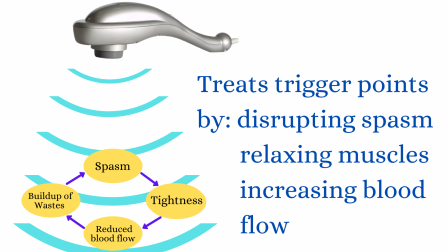
The main benefit of any massage is to relax the muscles and increase blood flow. Vibration certainly does this. Vibration massage also helps stop spasm and remove the build up of waste products in your muscles. As shown in this diagram these are a key to treating trigger points. For more information please see our guide The scientifically proven effects of vibration massage- with clinical applications .
Please check out our excellent videos below:
While there are a lot of vibrating massagers on the market very few are able to deliver the serious amounts of therapeutic standard vibrations need to effectively treat trigger points. This is why when looking for something for our Chiropractic patients to use we built our own . For more information please see our article How to choose a massager . However, you will need to avoid the following.
Massage guns are designed to physically jackhammer your muscles rather than send in therapeutic vibrations. Because of this they:
Despite this, as this video shows massage gun marketers act deceptively and misrepresent the facts to mislead people that they are a good idea.
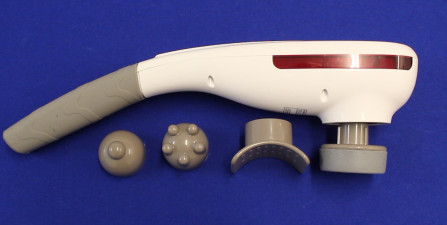
The market is flooded with massagers built by factories that have absolutely no interest in building serious therapeutic devices. As an example, our factory send me this machine to look at. Like most similar machines it came with cheap plastic gimmick shaped heads that are next to useless so I glued on a decent head from one of our massagers. When you use it though it feels like it’s not doing much and you need to press in to help it. That’s because it has got a low powered motor and it’s head doesn’t go up and down anywhere the amount a proper therapeutic device does.
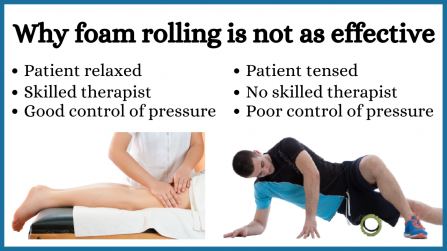
Although widely marketed we recommend that you avoid using balls or foam rollers.
For more information please see our article Do foam rollers work .
In this section I’ll go over each of the muscle groups commonly involved in back pain, giving

These are the long muscles closest to the surface that run down each side of your spine. They can become tight and fatigued, especially when your posture is slumped forward or sitting at a desk.
Because they are just below the surface they are the muscles that typically feel great when massaged by a professional therapist. Although they are behind you it is easy to reach them using a vibration massager or Thai self massage as shown below.
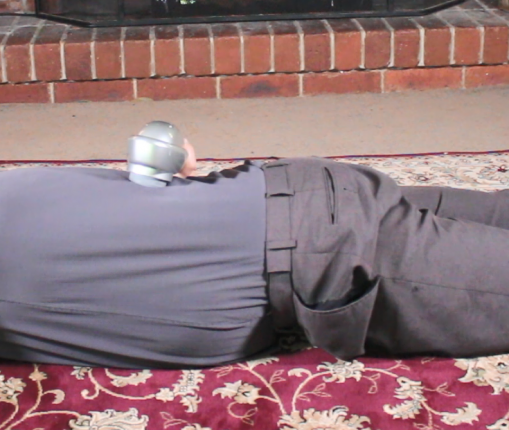
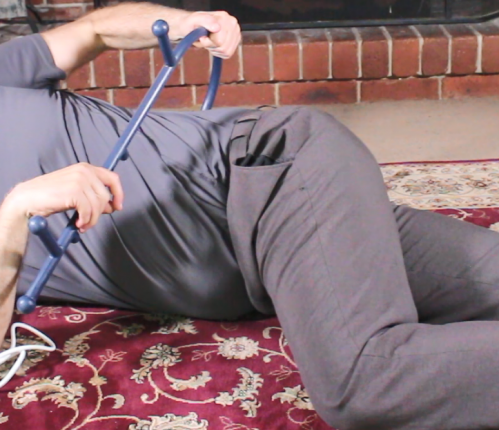
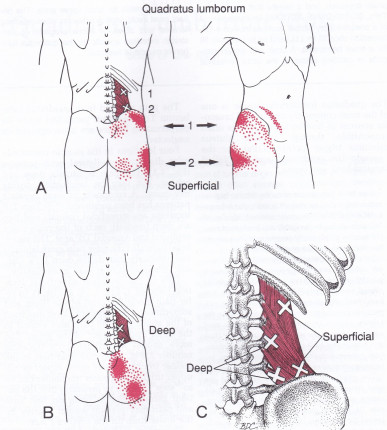
As this pic shows these muscles are deep beneath the erector spinae muscles. They are largely responsible for sideways bending and stabilising your lower vertebrae. Trigger points in these muscles are commonly involved in lower back pain.
These muscles sit deep. It is possible to use Thai self massage, but the muscle is deep so it will need a bit of pressure. A proper vibration massager will penetrate to these muscles if used as shown.
The easiest and most effective way to massage these muscles is to use our Ultimate Quad Head Massager as shown below, sitting it behind you on a chair. When used like this two heads sit over each of the muscles, soaking the muscles with therapeutic vibrations.
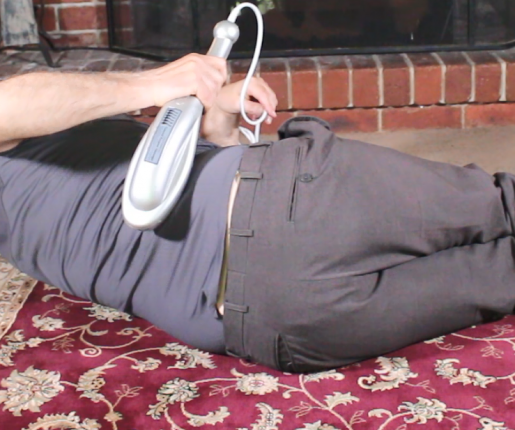
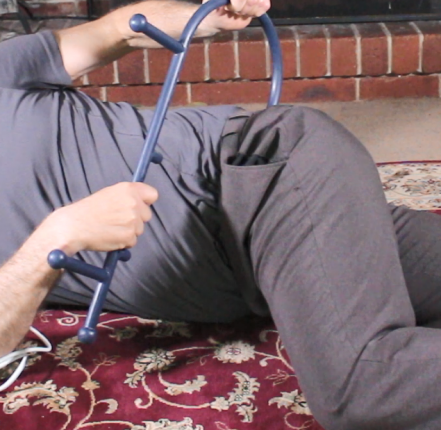
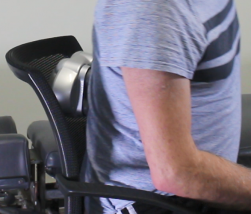
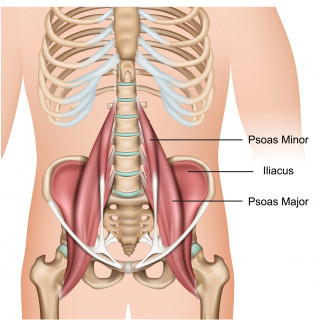
This is the muscle that supports the front of your spine, and is often responsible for pain when standing, walking or running. Because it sits behind a lot of very important and sensitive things in your abdominal and pelvic areas please leave this one to professionals.
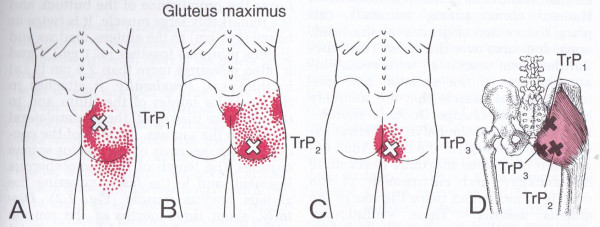
This muscle is the one that most shapes your buttocks, and is very important for activities such as getting out of a chair or walking up stairs. Trigger points in gluteus maximus often cause pain while doing these movements.
Self massage of these muscles is best done while laying on your opposite side so the muscle you are massaging is relaxed.
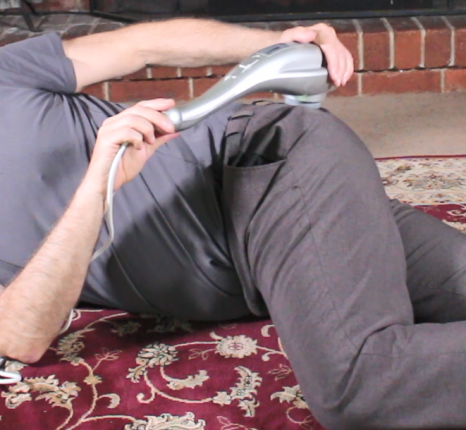
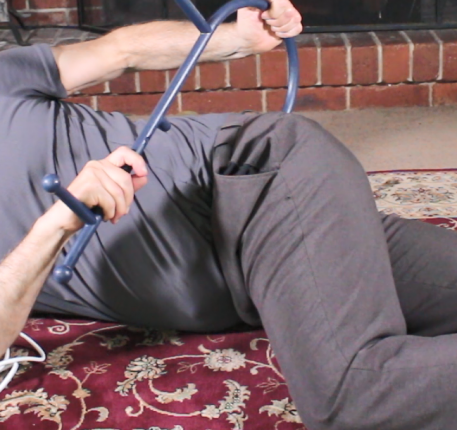
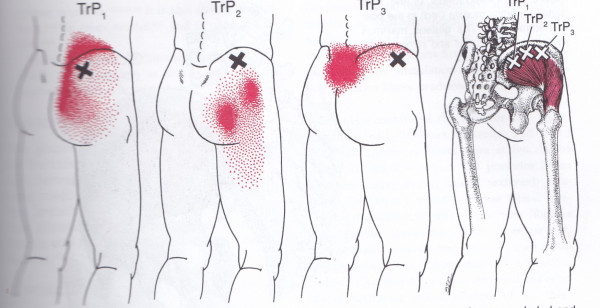
These muscles sit beneath gluteus maximus and act more to bring your leg out the side or stabilise your pelvis sideways. Therefore trigger points in these muscles can cause pain while walking and your weight is on one foot.
The massage technique is very similar to gluteus maximus, only these muscles are much deeper. The vibration massager will penetrate to these quite easily, but the Thai self massage technique will need considerable pressure.
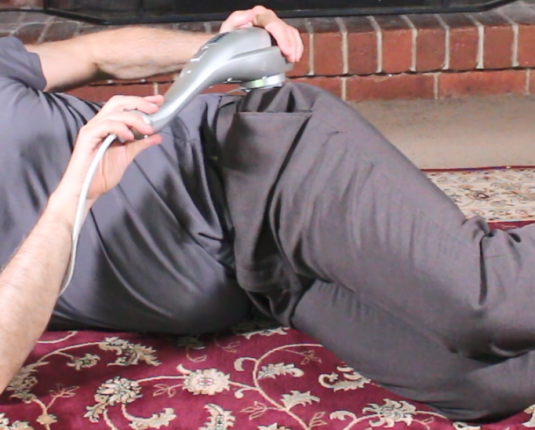
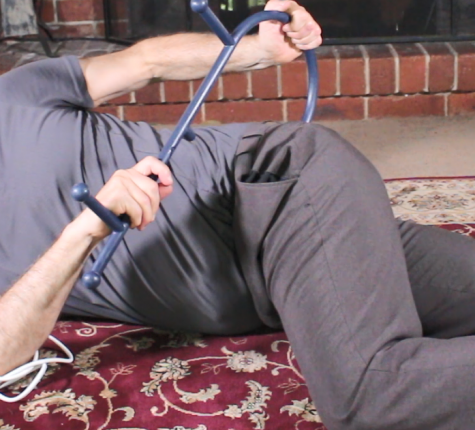
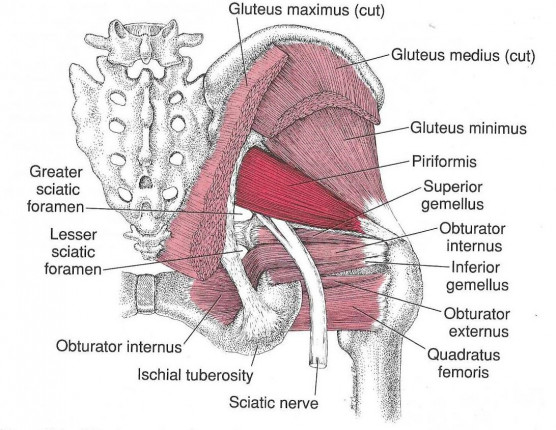
These sit deep beneath the gluteal muscles and can cause deep hip and buttock pain. The piriformis muscle is in close contact with the sciatic nerve, so tightness can press on the nerve causing sciatic pain. This is known as piriformis syndrome.
The technique is very similar to the previous muscles. However, the muscles are very deep. Vibration massage will handle this fine, but leave it on a bit longer for the vibrations to soak in. The amount of pressure needed for Thai self massage would be very painful and probably not safe for self use.
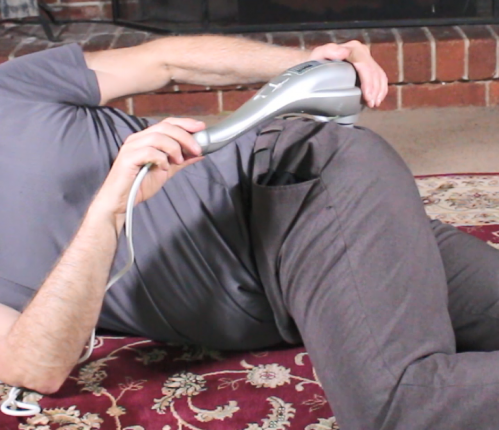
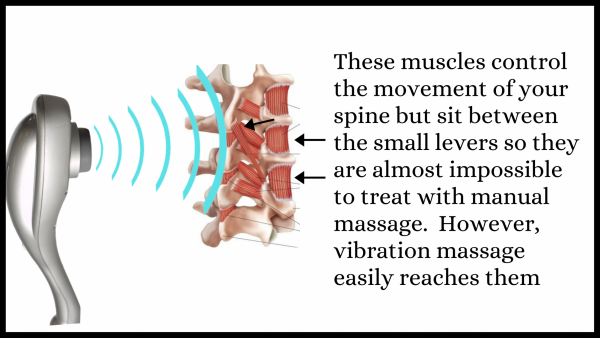
As this picture shows the vertebrae have levers with a large number of small muscles attached. As discussed in Back pain: massage therapists miss the most important muscles , these muscles are critical for the function of your spine but cannot be reached using conventional massage.
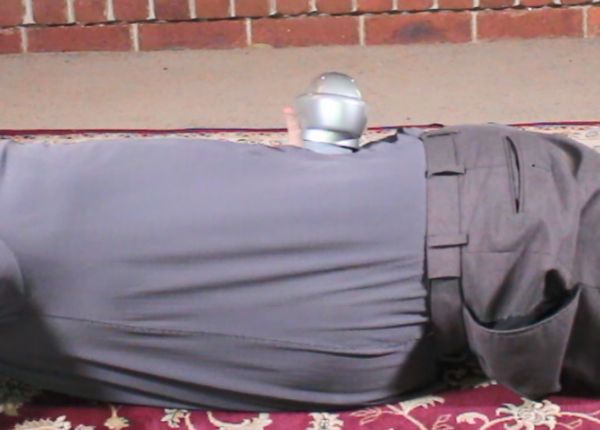
These muscles are so deep and hard to get to that therapists cannot even feel them to examine them. However, a properly qualified professional will indentify thatt they are tight when they restrict movenet in parts of your spine.
The only way to effectively massage these muscles is by sitting a therapeutic vibration masaager over them and allowing the vibrations to penetrate.
Because therapeutic vibrations relax muscles and stimulate blood flow they are good for normal healthy muscles as well as tight ones. Because of this it is often easier to use our Ultimate Quad Head Massager as shown above for the Quadratus Lumborum muscle and soak the whole area.
If you found this useful please check out our other self massage and trigger point therapy articles.
DrGraeme massagers were originally built by Dr Graeme for use in his clinic, and to prescribe to his patients for additional self use at home. Now these are used by colleagues and other professionals for similar purposes. If you are a professional and wish to know more about this therapy, or possibly get a sample massager to trial please check out our practitioner page.
We are continually adding more information on research and uses. Subscribe below to have us email them to you "hot off the press".

Several years ago Dr Graeme, a Chiropractor practicing in Victoria, Australia was looking for a serious hand held massager his patients could use at home to get the extra quality massage they needed. The ones he found in the shops and on-line for home use looked nice but were not serious, and... read more
Massagers with vibrating pads that sit on the surface and send vibrations deep into your muscles have been used by professionals for... Read Article
Although often described as “misaligned vertebrae” or “bones out of place” most issues that cause back pain actually involve abnormal... Read Article
Clinical trials have shown that massage is effective in relieving fibromyalgia. However, the results show that some are better than... Read Article
Vibration massage is an excellent therapy. However, too many massage guns fail to deliver this because: they use percussion which is less... Read Article
Massage and trigger point therapy are widely used to treat back pain. I this article we’ll discuss how these may help with your problem,... Read Article
Two of the best studies of shoulder pain found that (myofascial) trigger points in 17 different muscles contribute to shoulder pain... Read Article
Massage or “pressure point” therapy has given excellent relief of headaches in clinical trials. In this article we will show you how to... Read Article
Massage has been widely used by sports clubs and professional athletes, but more recently self massage options have made these more... Read Article
Do not refresh or leave this page until loading complete.